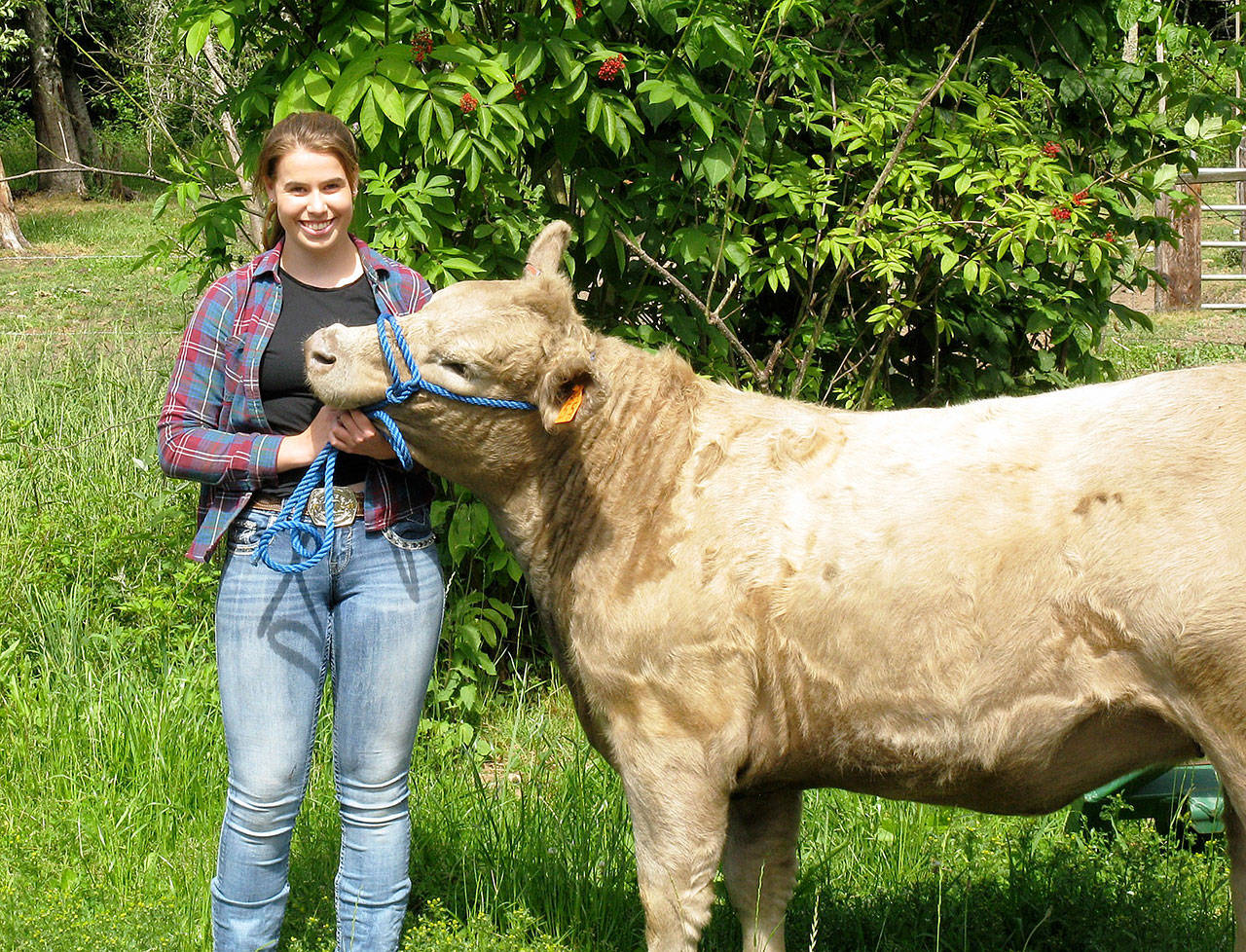For one South Whidbey High School student, 4-H and the Whidbey Island Fair are essential parts of ensuring a successful future for the agricultural community.
Samantha Ollis, 16, also sees the fair as a business opportunity. By taking her pigs and cows to market, she is helping to pay for the education to prepare for a career as a large animal veterinarian.
Ollis, who lives in the Holmes Harbor area, has been raising swine for seven years and cattle for five.
“It all started when dad brought pigs home and asked if I wanted to raise one,” she says. “I just really liked them.”
Her interest grew when she started going to the fair.
“It was really cool seeing all the kids at the fair and I just wanted to do it,” says Ollis. “A few years later, I went to the fair and dad asked if I wanted a cow.”
She started with “Nearly,” a red Angus who nearly died from lack of mother’s milk, acquired from the Windecker family of Clinton. Ollis showed the cow at the 2013 fair, and Nearly still lives at the Ollis home.
At the fair, all livestock goes into showmanship and at least one of several other classes. Those animals which reach a minimum weight in market and feeder classes will be sold. How an animal is judged determines the selling price. Bidders can buy a whole animal or quarters.
This year, Samantha Ollis is showing a year-old Charolais heifer in market class. Charolais cattle originated in the Burgundy region of eastern France. The Charolais are known for blond coloring, muscular body, quick growth and high meat yield.
Ollis acknowledges that she isn’t completely comfortable selling her animals.
“It’s not easy; I love all my animals,” she says. “I think about auction way before and decide ahead of time which animal is going. I also think about where the money goes and how well the animal was raised. But I don’t like to be in the barn when the animal is leaving.”
Her father, Dwayne, adds that it’s important to consider what the producers are putting into an animal and to recognize the quality.
Last year, Ollis earned about $7,200 from the sale of two pigs and two cows.
“I’m very fortunate that my dad lets me keep all the money I earn,” she says, “but it’s not going to (completely) cover my college.”
Ollis says her interest in veterinary medicine comes from when she began raising pigs and tending to their well-being.
There are currently five cows and two pigs at the Ollis home. She shares one of the cows with her 14-year-old sister, Sidney.
Ollis says the fair is paramount for most 4-H members, allowing them to interact with the general public and demonstrate what they’ve accomplished. Getting to the fair involves overcoming struggles, learning responsibility, solving problems, gaining experience, and helping others, according to Ollis.
“It makes you ask questions and helps you be comfortable in public,” she says.
Ollis is also active in the 4-H leadership program, attending various educational conferences during the year. Recently, for example, 4-H leadership members developed and presented a bill on an animal abuse registry at the state legislature. The bill is still pending.
It’s important to understand, Ollis says, that 4-H is really run by the members themselves. The leaders provide guidance, but the participants determine how the organization operates, and if they will be involved in service projects and fundraising.
The fair, says Dwayne Ollis, is “a time for the kids to shine and show what they’ve really done”
Not all 4-H activities are directly related to agricultural endeavors. At this year’s Whidbey Island Fair, there are 4-H demonstrations on food and nutrition, clothing, needlework, fine and applied arts, photography, social sciences, environmental affairs and writing.


